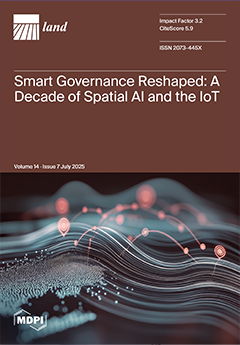This study aimed to predict the potential habitats of
Luciola unmunsana using a species distribution model (SDM)
. Luciola unmunsana is an endemic species that lives only in South Korea, and because its females do not have genus wings and are less fluid, it is difficult to collect, so research related to its distribution and restoration is relatively understudied. Therefore, this study predicted the potential habitats of
Luciola unmunsana across South Korea using the single model Maximum Entropy (MaxEnt) and a multi-model ensemble model to prepare basic data necessary for a conservation and habitat restoration plan for the species. A total of 39 points of occurrence were built based on public data and prior research from the Jeonbuk Green Environment Support Center (JGESC), the Global Biodiversity Information Facility (GBIF), and the National Institute of Biological Resources (NIBR). Among the input variables, climate variables were based on the shared socioeconomic pathway (SSP) scenario-based ecological climate index, while nonclimate variables were based on topography, land cover maps, and the Enhanced Vegetation Index (EVI). The main findings of this study are summarized below. First, in predicting
Luciola unmunsana potential habitats, the EVI, water network analysis, land cover, and annual precipitation (Bio12) were identified as good predictors in both models. Accordingly, areas with high vegetation activity in their forests, adjacent to water resources, and stable humidity were predicted as potential habitats. Second, by overlaying the predicted potential habitats and highly significant variables, we found that areas with high vegetation vigor within their forests, proximity to water systems, and relatively high annual precipitation, which can maintain stable humidity, are potential habitats for
Luciola unmunsana. Third, literature surveys used to predict potential habitat sites, including Geumsan-gun, Chungcheongnam-do, Yeongam-gun, Jeollabuk-do, Mudeungsan Mountain, Gwangju-si, Korea, and Gijang-gun, Busan-si, Korea, confirmed the occurrence of
Luciola unmunsana. This study is significant in that it is the first to develop a regional SDM for
Luciola unmunsana, whose population is declining due to urbanization. In addition, by applying various environmental variables that reflect ecological characteristics, it contributes to more accurate predictions of the potential habitats of this species. The predicted results can be used as basic data for the future conservation of
Luciola unmunsana and the establishment of habitat restoration strategies.
Full article





